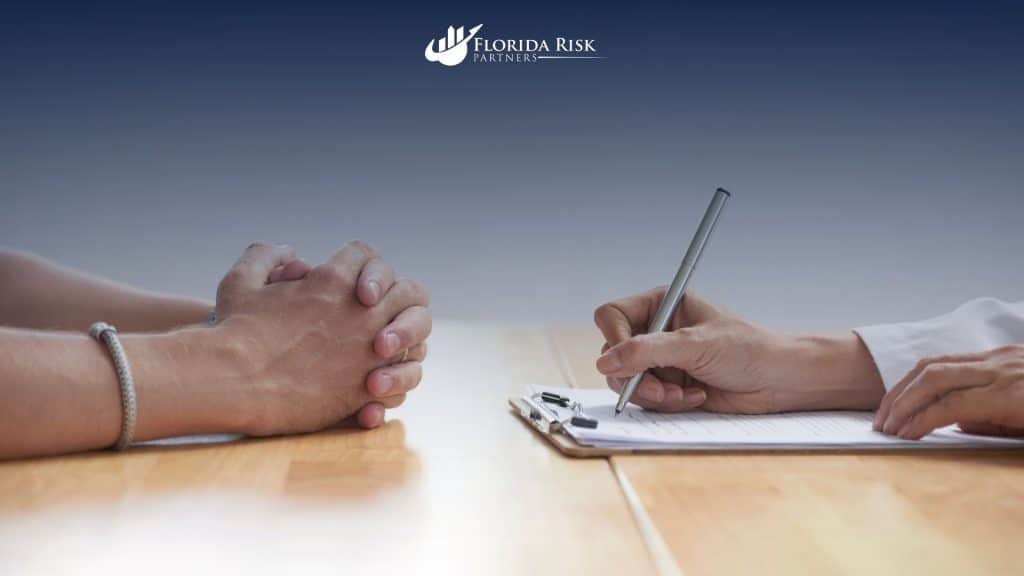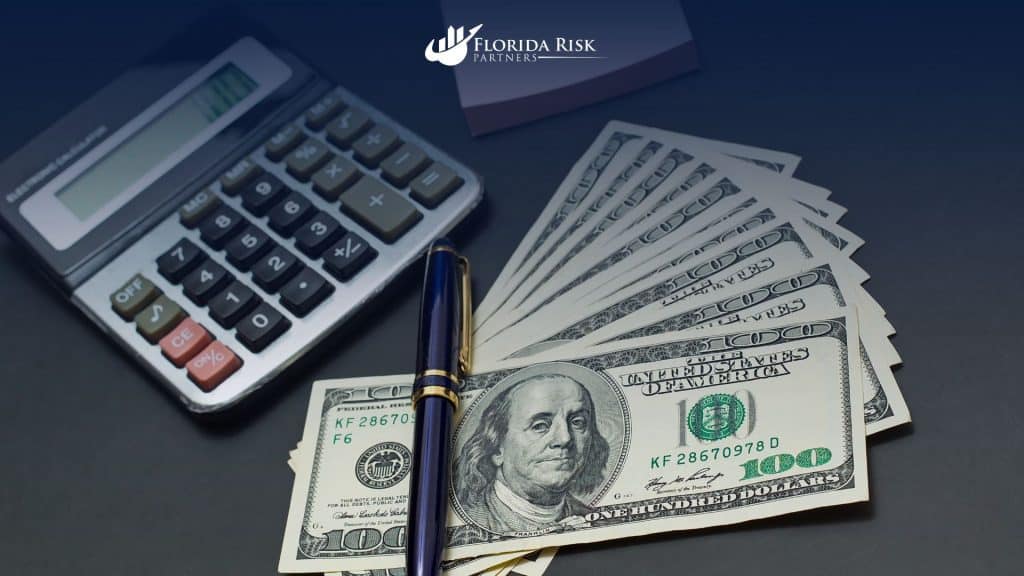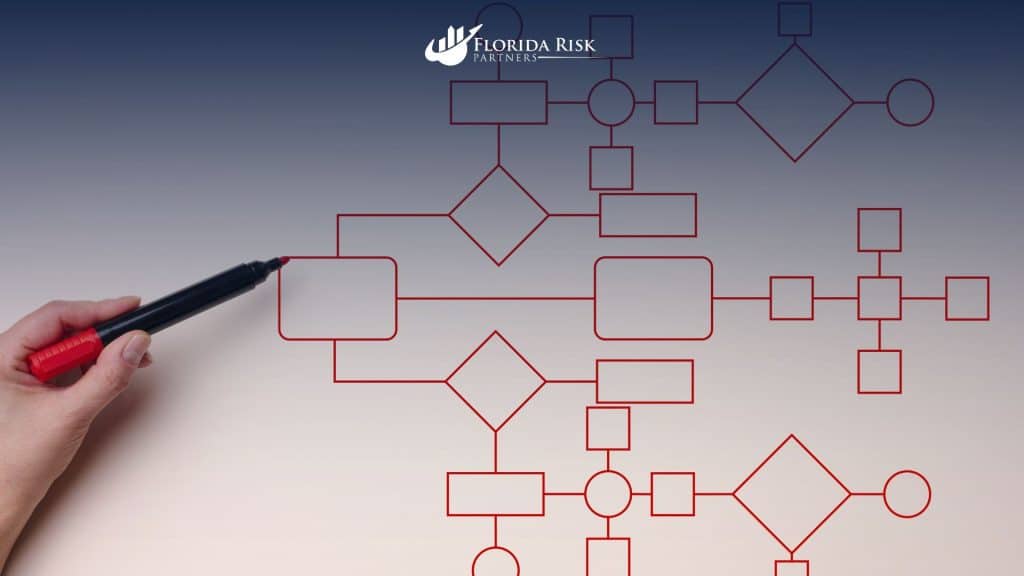-
Main Office: 1434 E. Bloomingdale Ave Valrico, FL 33596-6110
-
Phone: (888) 601-6660
-
Email: info@floridariskpartners.com

Table of Contents:
- Introduction
- What is Personal Umbrella Liability Insurance?
- Why Do You Need Personal Umbrella Liability Insurance?
- How Does Personal Umbrella Liability Insurance Work?
- What Does Personal Umbrella Insurance Cover?
- What are Personal Umbrella Insurance Coverage Exclusions?
- Who Needs Personal Umbrella Liability Insurance?
- How Much Coverage Do You Need?
- How Much Does Personal Umbrella Liability Insurance Cost?
- How to Purchase Personal Umbrella Liability Insurance
- Navigating the Claims Process
- Conclusion
1. Introduction
In today’s world, where accidents and unexpected events can occur at any moment, having adequate insurance coverage is essential. While most people are familiar with basic insurance policies like homeowners and auto insurance, many overlook an important layer of protection: personal umbrella liability insurance.
This blog post will serve as your ultimate guide to understanding personal umbrella liability insurance, its benefits, and why it might be the crucial addition to your insurance portfolio.
Complete the form below to get Our 12,000 word comprehensive guide to personal umbrella insurance written by David Carothers.
2. What is Personal Umbrella Liability Insurance?
Personal umbrella liability insurance is an insurance policy designed to provide excess liability coverage beyond the limits of your existing homeowners, auto, and water craft policies. Think of it as a financial safety net that protects you from major claims and lawsuits, ensuring your assets and future earnings are secure.
3. Why Do You Need Personal Umbrella Liability Insurance?

While your homeowners and auto insurance policies provide a certain level of liability coverage, they might not be sufficient to cover substantial claims. For instance, if you are involved in a car accident where the total damage exceeds your auto policy’s limit, you could be held personally responsible for the excess amount. This is where an umbrella policy steps in, covering the gap and protecting your finances.
Examples of When Umbrella Insurance Can Save You
- Auto Accident: Imagine you are involved in a car accident that results in severe injuries to multiple people. The total medical expenses and damages amount to $1 million, but your auto insurance only covers $300,000. Without an umbrella policy, you would be responsible for the remaining $700,000.
- Homeowner Liability: A guest slips and falls on your property, sustaining serious injuries. The guest sues you for $750,000, but your homeowner’s insurance only covers $250,000. Your umbrella policy can cover the additional $500,000.
4. How Does Personal Umbrella Liability Insurance Work?
Umbrella insurance works in conjunction with your primary insurance policies, such as homeowners and auto insurance. Here’s how it typically operates:
- Primary Policy Activation: When a claim occurs, your primary insurance policy (e.g., auto or homeowners) responds first.
- Exhaustion of Limits: If the claim amount exceeds the liability limits of your primary policy, your personal umbrella liability insurance kicks in.
- Extended Coverage: The umbrella policy covers additional costs up to its own limit, which typically starts at $1 million.
5. What Does Personal Umbrella Insurance Cover?

Coverage Inclusions
Personal umbrella liability insurance offers broad coverage that extends beyond your primary policies. Here are the main areas it covers:
- Bodily Injury Liability: Covers medical expenses, lost wages, and other costs if someone is injured due to your actions.
- Property Damage Liability: Covers the cost to repair or replace someone else’s property that you damage.
- Personal Injury Liability: Includes coverage for non-physical injuries such as libel, slander, false arrest, and invasion of privacy.
- Legal Defense Costs: Pays for legal fees associated with defending a covered claim, regardless of whether you are found liable.
Additional Coverage Areas
- Landlord Liability: Provides extra liability coverage if you own rental properties.
- International Incidents: Some umbrella policies extend coverage for incidents that occur outside of the United States.
6. What are Personal Umbrella Insurance Coverage Exclusions?
While umbrella insurance offers extensive protection, it’s important to be aware of common exclusions:
- Intentional Acts: Claims resulting from intentional harm or damage caused by you or a family member.
- Business Activities: Incidents related to your business activities are generally excluded unless you have a separate business umbrella policy.
- Certain Vehicles: Specific vehicles, such as aircraft or certain types of watercraft, may not be covered unless additional coverage is purchased.
- Contractual Liability: Claims arising from contracts or agreements you have entered into may be excluded unless explicitly included in your policy.
7. Who Needs Personal Umbrella Liability Insurance?

While anyone can benefit from the added protection of an umbrella policy, it is particularly important for certain individuals and situations. Here are some key considerations:
High Net Worth: If you have substantial assets, such as savings, investments, real estate, or valuable personal property, you are a prime candidate for personal umbrella liability insurance. In the event of a significant liability claim, these assets could be at risk if your primary insurance limits are exceeded.
Significant Earning Potential: Even if you don’t currently have a high net worth, having a high earning potential means future income could be garnished to pay for a liability claim. Umbrella insurance protects not just your current assets but also your future earnings.
Higher Liability Risks: Certain lifestyle factors and activities increase your exposure to liability risks. If you engage in activities that have a higher likelihood of resulting in injury or damage, umbrella insurance provides crucial additional protection. Examples include:
- Frequently hosting social gatherings at your home.
- Owning a swimming pool, trampoline, or other recreational equipment on your property.
- Owning rental properties and having tenants.
- Owning multiple vehicles or recreational vehicles (boats, ATVs, etc.).
Public Visibility: Individuals who are in the public eye, such as business owners, executives, or public figures, may be at a higher risk for lawsuits. Increased visibility can lead to higher chances of being sued for defamation, invasion of privacy, or other personal injury claims.
8. How Much Coverage Do You Need?
Determining the appropriate amount of personal umbrella liability insurance coverage involves evaluating your net worth, income, lifestyle, and potential liability exposure. Here’s how to calculate the coverage amount:
- Evaluate Your Primary Insurance Limits: Your umbrella policy will only be activated once the limits of your primary insurance policies are exhausted. Knowing these limits is essential to determine the additional coverage needed. Review your current insurance policies to identify the liability limits of each.
- Estimate Potential Liability Exposure: Consider potential scenarios that could result in significant liability claims. This includes serious car accidents, major injuries to your property, and lawsuits for personal injury. Think about the worst-case scenarios and the associated costs.
- Add Your Net Worth and Potential Legal Costs: Ensure your coverage amount is sufficient to protect your entire net worth and cover potential legal costs. Add your total net worth to your estimated liability exposure. For example, if your net worth is $1 million and you estimate a worst-case liability scenario could cost $1 million, you should consider at least $2 million in umbrella coverage.
- Consider Future Needs: Your financial situation and risk factors may change over time. Choosing a higher coverage limit now can provide peace of mind for future changes in your life. Think about potential future increases in your net worth, changes in your lifestyle, or additional risks you might face.
9. How Much Does Personal Umbrella Liability Insurance Cost?

Several factors determine the cost of a personal umbrella liability insurance policy. Knowing these factors can help you understand how your personal situation affects your premium and what you can do to manage costs.
Factors Influencing the Cost
- Coverage Limits: The amount of coverage you purchase directly impacts the cost of your umbrella policy. Higher coverage limits will result in higher premiums.
- Underlying Policy Limits: Insurers require you to maintain certain minimum liability limits on your primary insurance policies (e.g., homeowners, auto). If your primary policy limits are lower, you might need to increase them, which can affect your overall insurance costs.
- Risk Factors: Your personal risk factors, such as your driving record, property features (e.g., swimming pool, trampoline), and lifestyle activities (e.g., hosting parties, owning pets), influence your premium.
- Number of Properties and Vehicles: Owning multiple homes, rental properties, or vehicles can increase your liability exposure and, consequently, your insurance costs.
- Location: Where you live can affect your premium. Areas with higher rates of litigation or higher liability risk (e.g., urban areas) may result in higher premiums.
Average Premium Costs
To give you a clearer picture of what to expect, here are some examples of average premium costs for personal umbrella liability insurance:
- Basic Coverage: A $1 million policy for an individual with standard risk factors typically costs between $450 to $600 per year.
- Moderate Coverage: A $2 million policy for a family with a few risk factors, such as a teenage driver or a home with a pool, typically costs between $800 to $1100 per year.
- High Coverage: A $5 million policy for an individual with significant assets, high earning potential, and multiple properties or vehicles typically costs between $1,700 to $2,200 per year.
10. How to Purchase Personal Umbrella Liability Insurance?
Selecting the right insurance provider and policy is crucial for obtaining reliable coverage and excellent customer service. Here are the key steps to purchasing an umbrella policy:
- Research Potential Providers: Look for insurers with strong financial ratings from independent rating agencies like A.M. Best, Moody’s, or Standard & Poor’s. Read customer reviews and testimonials to gauge satisfaction with claims handling and customer service.
- Evaluate Financial Stability: An insurer’s financial stability ensures they can pay out claims when needed. Choosing a financially stable company protects you from the risk of insolvency.
- Consider Reputation and Customer Service: Good customer service and a solid reputation mean smoother interactions and better support during the claims process. Ask for recommendations from friends, family, or your current insurance agent. Read online reviews and ratings from sources like J.D. Power.
- Compare Policy Options: Different insurers offer varying coverage options, limits, and exclusions. Comparing policies helps you find one that best fits your needs. Request quotes from multiple insurers and review the coverage details, exclusions, and premium costs.
Questions to Ask Potential Insurers
When speaking with potential insurers, asking the right questions can help you understand their policies and make an informed decision. Here are some essential questions to ask:
- What are the underlying liability limits required for my primary policies?
- What types of incidents and claims are covered by the umbrella policy?
- What are the exclusions and limitations of the policy?
- How does the claims process work?
- Are there any discounts available for bundling policies?
Common Myths and Misconceptions
Several myths and misconceptions about personal umbrella liability insurance can cause confusion and prevent people from obtaining this valuable coverage. Here are some common myths and the realities behind them:
- Myth 1: Only Wealthy People Need Umbrella Insurance
- Reality: While individuals with significant assets have more at stake, umbrella insurance is valuable for anyone with exposure to potential liability risks. Even if you don’t consider yourself wealthy, a severe liability claim can have devastating financial consequences.
- Myth 2: Umbrella Insurance is Too Expensive
- Reality: Personal umbrella liability insurance is relatively affordable compared to the amount of coverage it provides. Premiums typically range from $450 to $600 per year for $1 million in coverage.
- Myth 3: My Standard Insurance Policies Provide Enough Coverage
- Reality: Standard insurance policies have liability limits that may not be sufficient to cover major claims. Once these limits are exhausted, you’re responsible for any remaining costs. Umbrella insurance provides an extra layer of protection.
- Myth 4: Umbrella Insurance Only Covers Rare Events
- Reality: Umbrella insurance covers a broad range of incidents, including common occurrences such as auto accidents, injuries on your property, and personal injury claims like defamation or invasion of privacy.
- Myth 5: Umbrella Insurance is Complicated to Obtain
- Reality: Obtaining umbrella insurance is a straightforward process, especially if you already have homeowners or auto insurance with a provider. Many insurers offer umbrella policies as an add-on to existing coverage.
- Myth 6: Umbrella Insurance Covers Everything
- Reality: While umbrella insurance offers broad protection, it does have exclusions. It generally doesn’t cover intentional acts, business-related incidents, or specific vehicles like aircraft.
- Myth 7: Umbrella Insurance is Unnecessary if You Have No Significant Assets
- Reality: Umbrella insurance protects not only your current assets but also your future financial stability. A large liability claim can result in wage garnishment, affecting your income for years.
11. Navigating the Claims Process

Understanding the claims process for personal umbrella liability insurance is crucial to ensuring that you can navigate a potential claim smoothly and efficiently. Here’s a step-by-step guide to filing a claim:
Step 1: Report the Incident to Your Primary Insurance Provider
Your primary insurance (homeowners, auto, etc.) will be the first to respond to a claim. Contact your insurance company as soon as possible to report the incident and provide all relevant details.
Step 2: Document the Incident
Thorough documentation helps support your claim and provides evidence of the incident and resulting damages. Take photographs, gather contact information from witnesses, and keep copies of medical reports, repair estimates, and other relevant documents.
Step 3: Notify Your Umbrella Insurance Provider
If it becomes clear that the claim will exceed the limits of your primary insurance, notify your umbrella insurance provider. Provide them with the claim number from your primary insurance and any documentation you have collected.
Step 4: Cooperate with the Claims Adjuster
A claims adjuster will investigate the incident to determine the extent of the damages and the appropriate compensation. Be prepared to provide the adjuster with all requested information and documentation.
Step 5: Follow Up on the Claims Process
Regularly check in with your claims adjuster or insurance provider for updates. Ask for an estimated timeline and any additional information they may require.
Step 6: Review the Settlement Offer
Once the claims process is complete, you will receive a settlement offer. Reviewing it carefully ensures that it adequately covers your damages and losses. Compare the settlement offer with your documentation and expenses.
12. Conclusion
Personal umbrella liability insurance provides an invaluable layer of extra protection for those unexpected and potentially catastrophic events that can exceed the limits of your primary insurance policies. By understanding what it covers, how it works, and how to purchase the right policy, you can ensure that you and your assets are well-protected.
For a more detailed exploration of personal umbrella liability insurance, including case studies and expert tips, download our comprehensive e-book today.
Complete the form below to get Our 12,000 word comprehensive guide to personal umbrella insurance written by David Carothers.
Call Us Or
Schedule an Appointment
Select an agent below to view our online calendars and select a day and time that works best for you or call us directly at 888-601-6660. When you use our online calendars, you will receive an email with more information.



